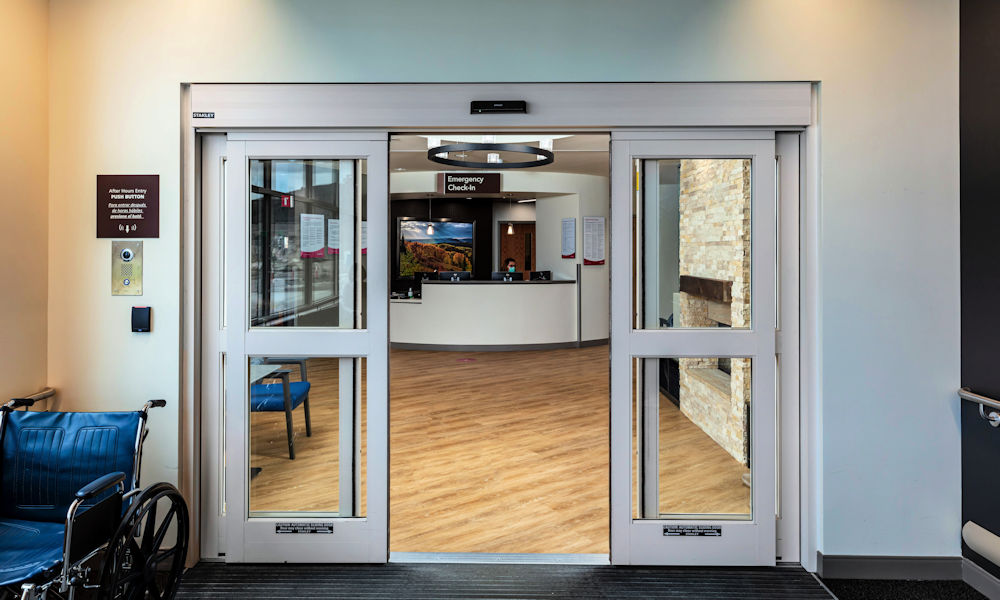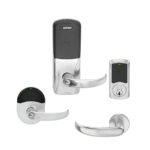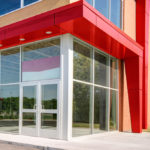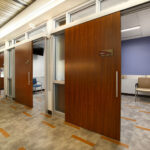 Automatic sliding doors have become very common in health care facilities, mercantile, business, and residential occupancies, and in other types of buildings. There are specialized code requirements that apply to these doors when installed in a means of egress, in addition to other sections of the codes and standards that cover all types of doors.
Automatic sliding doors have become very common in health care facilities, mercantile, business, and residential occupancies, and in other types of buildings. There are specialized code requirements that apply to these doors when installed in a means of egress, in addition to other sections of the codes and standards that cover all types of doors.
Below, I have answered some of the frequently asked questions about automatic sliding doors, and linked to additional resources:
Where are automatic sliding doors addressed by the model codes?
In the 2021 editions of the I-Codes, Section 1010.3.2 is called Power-Operated Doors, and includes requirements for automatic swinging, sliding, and folding doors. This section requires automatic doors to comply with either the ANSI/BHMA A156.10, A156.19, or A156.38 standards. Section 1010.1.2 specifies the types of doors allowed in a means of egress, and Exception 7 permits power-operated doors in accordance with Section 1010.3.2.
The 2021 edition of NFPA 101 – Life Safety Code addresses automatic doors in Section 7.2.1.9, Powered Door Leaf Operation, and requires compliance with the same ANSI/BHMA standards listed in the I-Codes.
When is an automatic sliding door required to have the break out / break away feature allowing it to swing in the direction of egress?
The answer to this question depends on which of the model codes have been adopted and whether there are state or local modifications. In the 2021 edition of NFPA 101 – Life Safety Code, the “swing-out feature” is required by Paragraph 7.2.1.9.1.5: The door assembly shall be designed and installed so that, when a force is applied to the door leaf on the egress side, the door leaf shall be capable of swinging from any position to provide full use of the required width of the opening in which it is installed. However, Section 7.2.1.9.1.7 exempts automatic sliding doors from this feature when the door serves an occupant load of less than 50 people, as long as the door can be slid open manually within the force limitations stated in the code. Signage is required, stating “IN EMERGENCY, SLIDE TO OPEN.”
In the 2021 edition of the International Building Code (IBC), the requirements for automatic doors are found in Section 1010.3.2 – Power-Operated Doors. Similar to NFPA 101, this section states (in part): The door shall be capable of opening from any position to the full width of the opening in which such door is installed when a force is applied to the door on the side from which egress is made. Again, this is what mandates the break out or break away feature, but the IBC does not include an exception similar to NFPA 101 that would exempt automatic sliding doors serving an area with a certain occupant load. It is possible that a code official MIGHT allow the break out / break away feature to be omitted if the door is serving an occupant load of 10 people or less, based on IBC 2021, Section 1010.3.2, Exception 9, which allows manually operated sliding doors serving areas with a calculated occupant load of 10 or less.
For more information on break out / break away, refer to these posts: QQ: Break Out / Break Away and Clear Opening Width on Automatic Sliding Doors.
What are the options for locking hardware on an automatic sliding door, and what affects the selection of this hardware for a door in a particular location?
Typically, an automatic sliding door that requires a locking mechanism will have one of the following types of hardware. The model codes and referenced standards including requirements that will dictate which hardware to use, based on egress, accessibility, and fire protection, and any specialized life safety measures that are required. For detailed information, refer to this recent post or to one of the links below:
- Hook bolt with cylinder outside, thumbturn inside
- Double-cylinder hook bolt
- Panic hardware
- Access control / free egress
- Special locking arrangements:
Do the code requirements for “special purpose” doors apply to the automatic sliding doors typically found on a building entrance?
In the 2021 edition of the International Building Code (IBC), Section 1010.3.3 is called Special Purpose Horizontal Sliding, Accordion or Folding Doors. These are not the typical automatic sliding doors that are found on many building entrances. This section applies to the type of door that is normally hidden behind a panel in the wall, and projects across a corridor or other opening upon a signal from the fire alarm / sprinkler system or security system. The requirements for these doors are detailed in this post.
I hope this answers any questions you may have…if not, leave your question in the comment box.
For answers to more frequently asked questions, check out these recent FAQ posts:
- FAQs About Accessible Door Openings
- FAQs About Sliding Doors
- FAQs About Flush Bottom Rail Requirements
- FAQs About Fail Safe and Fail Secure Hardware
- FAQs About Roof Doors
- FAQs About Smoke Barrier Doors in Health Care Facilities
- FAQs About Electromagnetic Locks
- FAQs About Low-Energy Automatic Operators
- FAQs About Health Care Corridor Doors
- FAQs About Controlled Egress Locks in Health Care Facilities
You need to login or register to bookmark/favorite this content.









What of the need to secure sliding door operation during a fire event to prevent spread of the fire or smoke? Is this addressed anywhere?
Hi Arthur –
If it’s a fire door, it will need to close and latch on its own if there is a fire.
– Lori